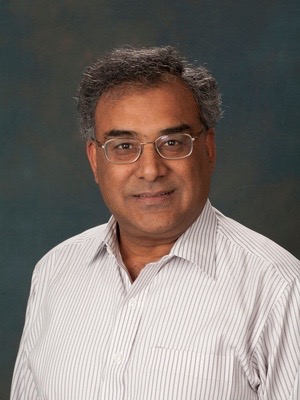
Anil Kumar Pradhan
Professor
Department of Astronomy
Chemical Physics Program
U. London, England, 1977
| Research Division : |
Biological Spectroscopy and Imaging |
Contact : |
4017 McPherson Laboratory |
More info : |
|
Alumni : |
Sara Lim , Maximillian Westphal |
Research Interests: Our multi-disciplinary program affords a wide range of possibilities to graduate students.
The biomedical research is focused on X-ray spectroscopy and imaging for cancer therapy and diagnostics (theranostics) using nanotechnology. The research aims to bring about a paradigm change and transition from conventional broadband X-ray imaging (such as in CT scanners or common X-ray sources) to precision monochromatic spectroscoppy for cancer theranostics. A novel methodology, Resonant Nano-Plasma Theranostics,
is proposed to exploit resonances due to deep inner-shell transitions that trigger Auger processes in heavy elements such as gold. The methodology can be used to build laboratory monochromatic X-ray sources for imaging, as well as for therapy using monoenergetic resonant absorption by high-Z nanoparticles or radiosenstizing agents embedded in cancerous tumors.
The research program is based on theoretical atomic, molecular, and biomedical spectroscopy, and high-performance computing and numerical simulations to model the interaction of X-rays with biological matter. The experimental program involves buiding X-ray devices to generate monoenergetic radiation, instead of broadband radiation from conventional sources that are highly inefficient and result in unnecessary exposure to radiation. This research is in collaboration with an interdisciplinary group of scientists from atomic and molecular physics and chemistry, radiation oncology, and nanobiotechnology. Researchers are affiliated with the College of Biological, Mathematical, and Physical Sciences and the College of Medicine.
More broadly, our Atomic Astrophysics program involves the spectroscopy
of astrophysical objects such as stars, galaxies, nebulae, supernovae, and cosmology. Our group carries out large-scale computations for
physical parameters necessary for spectral interpretation and analysis all across the electromagnetic spectrum, from the far-infrared to hard X-ray, observed from ground based observatories and space based satellites. These calculations are done mainly at the Ohio Supercomputer Center. The high-precision theoretical data is benchmarked against experimental measurements on synchrotron sources and nuclear fusion devices at national laboratories. The atomic-astrophysics work is part of a major international collaboration.
Details of these programs are given on our website.
-------------------------------------------------------------------------